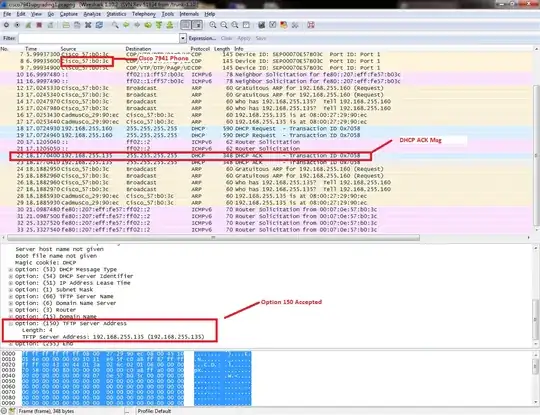I've been reading and googling for the past week trying to wrap my head around the Cisco IP Phone TFTP upgrade process. The effort has been to try and make a Cisco 7941G work with Asterisk. This process has been documentended well in many places and I've followed several guides. The issue I am having is the Phone in questino never seems to ask or make TFTP connection even though it is getting the correct information from the DHCP option 150.
Doing a Wireshark, I see the Cisco phone ask for a DHCP information, I see the DHCP return an Offer and the Phone accept it. I then see the Phone issue a few ARP requests for the location of the TFTP server, but after that. Nada. One thing that is alarming or I've notice is ICMPv6 Router Solicitation datagrams seem to show up and then are immediately followed by the Phone rebooting again and again.
Other notes: I've verified the TFTP server is working and logging via a TFTP client attached to the same Subnet.
- I've verified the phone can be upgrade. Via a know working environment using Cisco Call Manager, the Phone pulled down the firmware correctly.
- I've tried doing the Soft reset # 123456789*0# and the Hard reset to format the flash # 3491672850*#
- I never see anything in the TFTP server logs, even though I've used a TFTP client to verify the verbose level
- Is CDP or LLDP involded at all with the phone upgrade process? I see a lot of those messages, even when running it through a hub and not a switch.
- Weird thing is, I plug in a Cisco 7945G phone and it accepts the option 150 and pulls down the firmware files and configs.
